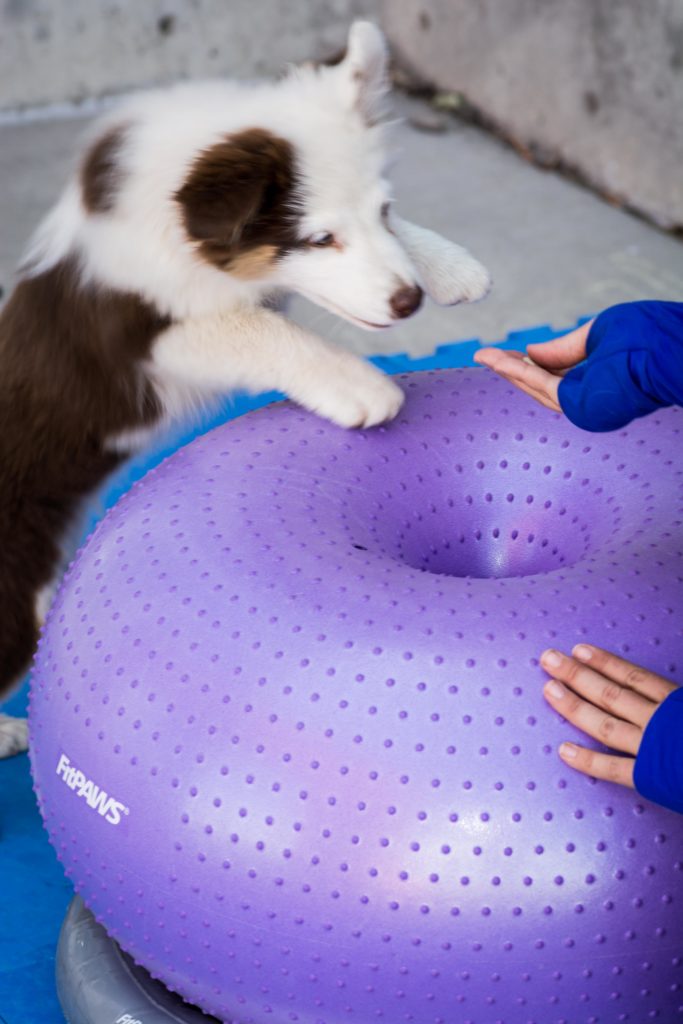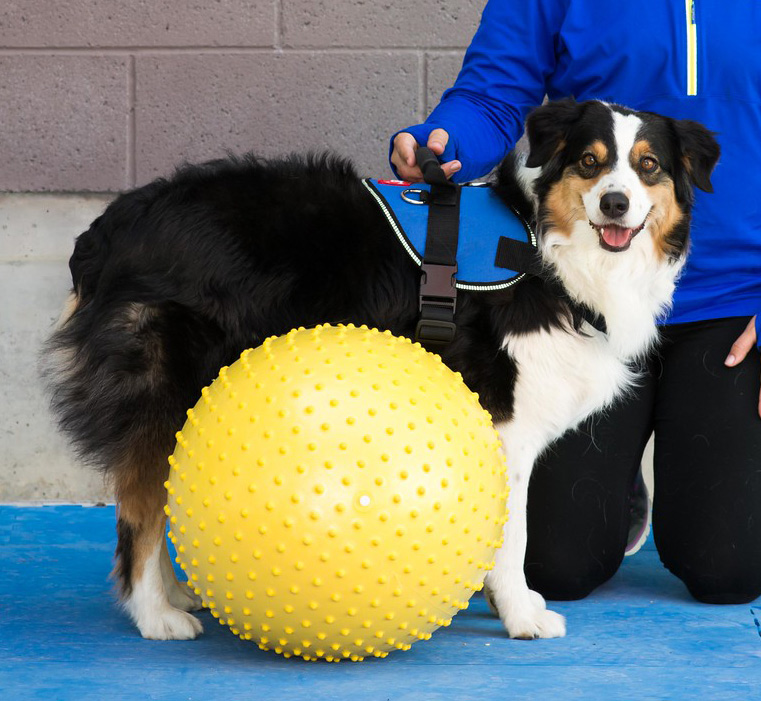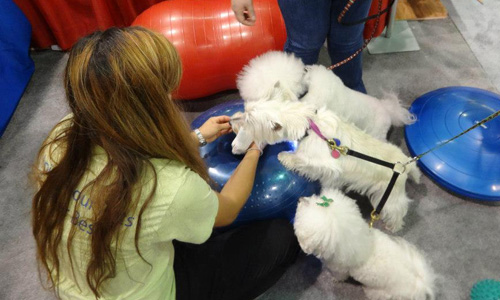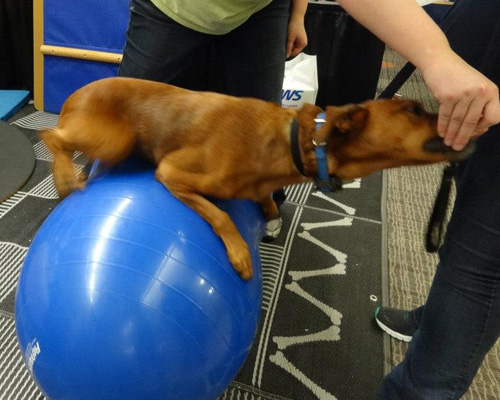
“How in the world do you get a dog on that a FitPAWS® ball?”
We hear that ALL the time.
Don’t worry, it’s a fun question to answer!…
 Check out The Ball, Dawg!
Check out The Ball, Dawg!
Step One: Prepare Your Tools
-
- You will need a quality ball designed specifically for dogs,
such as the FitPAWS® Peanut or TRAX Donut. - Grab a bag of your dog’s favorite treats or kibble.
- You will need a quality ball designed specifically for dogs,
Step Two: Prepare Your Space and your Dog
Give a little thought to where you’ll set up your dog’s ball. Make sure that there are no sharp objects in your ball work area, sharp objects in your dog’s fur, and that your dogs’ nails are trimmed or filed. There are ways of stabilizing each kind of ball, so that your dog will feel safer during the workout.
The Peanut provides a comfortable and stable experience to both dog and handler. Both of you can feel like you’re in control. You may want to stand and place the Peanut between your legs to stabilize the ball. Or, perhaps, you’d prefer to place the Peanut against a wall or between your sofa and coffee table or two ottomans. Look around and decide where you and your dog will be most comfortable.
Similar locations and techniques work for the TRAX Donut.
Step Three: Introduce The Ball To Your Dog
 First, let your dog sniff and touch the equipment. Once they’ve made friends with each other, encourage your dog to place a paw on top of the ball. Be sure to reward any success with treats, clicks, and/or verbal praise.
First, let your dog sniff and touch the equipment. Once they’ve made friends with each other, encourage your dog to place a paw on top of the ball. Be sure to reward any success with treats, clicks, and/or verbal praise.
Next, get behind your dog and encourage them to place their front paws on the ball. Let them get a feel for the unstable surface and allow their mind and body to adjust accordingly. When you feel they are ready, place your hands on each side of their back, supporting their weight, and slightly move them from side to side. Your dog is learning how to balance itself between the ball and the floor.
Now, rock the ball slowly and gently back and forth to increase their confidence with how the ball moves. As the ball rocks your dog may lift its paws and move around a bit. No problem, just keep them from falling. They are gaining the confidence they need for the next step.
 Step Four: Get On The Peanut!
Step Four: Get On The Peanut!
With your dogs front legs on the ball, get in front of them with their favorite treats or kibble. Holding the treat close to their nose, lure the dog forward to encourage them to get on the ball with all four legs. When they climb onto the ball, reward them immediately!
Your dog will likely prefer to sit at this point. Great! Give them time to get used to balancing on this new unstable surface. You can start to slightly bounce them so they start to feel comfortable. Then, move them back and forth and from side to side, so they start weight shifting. Their abdominals and other large muscles are kicking in and getting a workout.
Step Five: Sit To Stand
Now, holding a treat in front and above their nose, ask your dog to stand on the ball. Give them plenty of love and rewards while they maintain a standing position. While learning to balance themselves on the ball, they are gaining core strength and confidence. Don’t forget that your positive reinforcement is deepening the bond between you and your beloved canine companion.
Why Not A Round Ball?
Don’t get us wrong, we love our round exercise ball as much as you love yours. The problem is, our canine friends really seem to struggle with it. When we first realized this, we went back to the drawing board and designed a line of balance and conditioning equipment specifically for dogs.
Notice the difference:
On the round ball dogs experience:
|
The benefits of the FitPAWS® Peanut and NEW TRAX Peanut:
|


